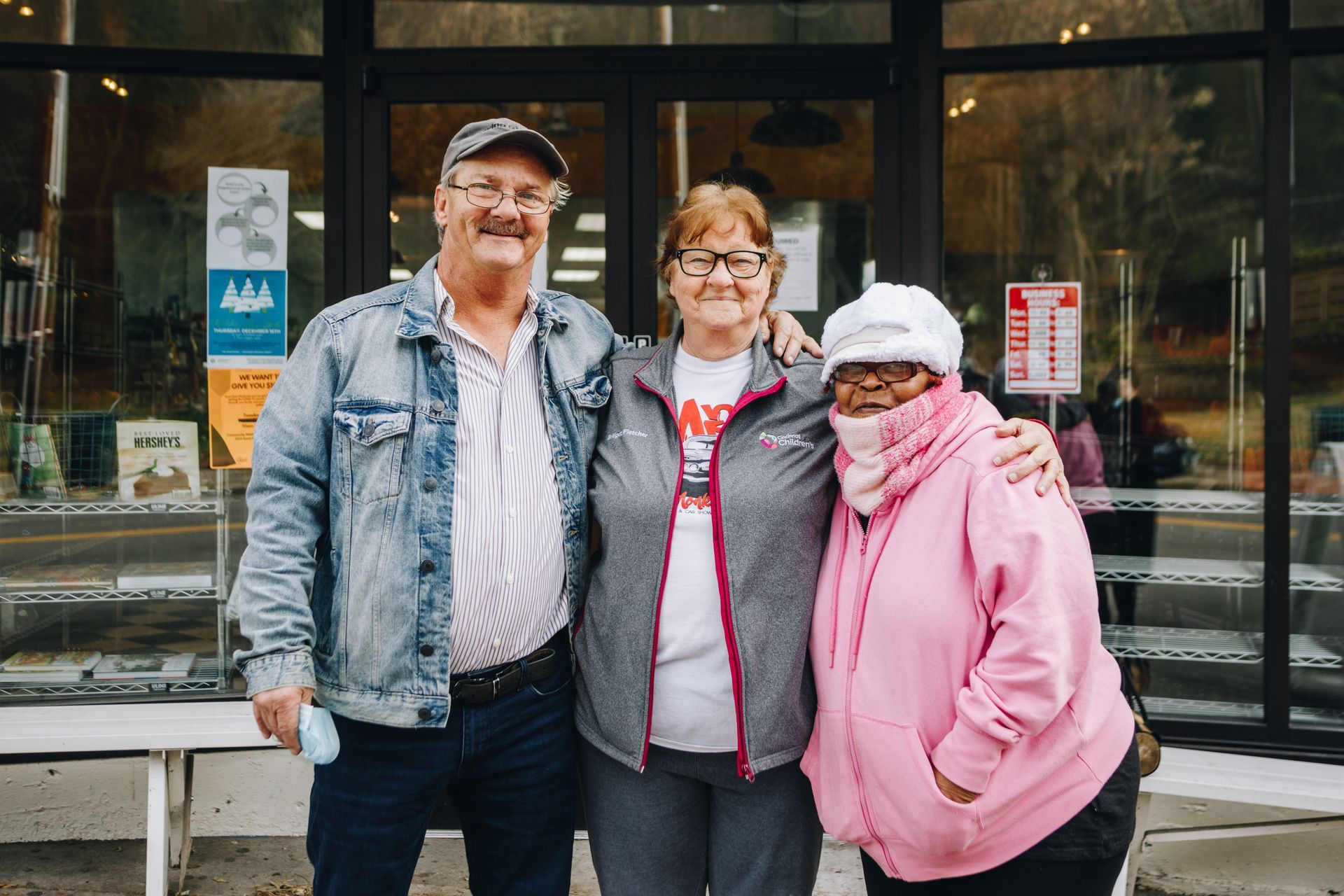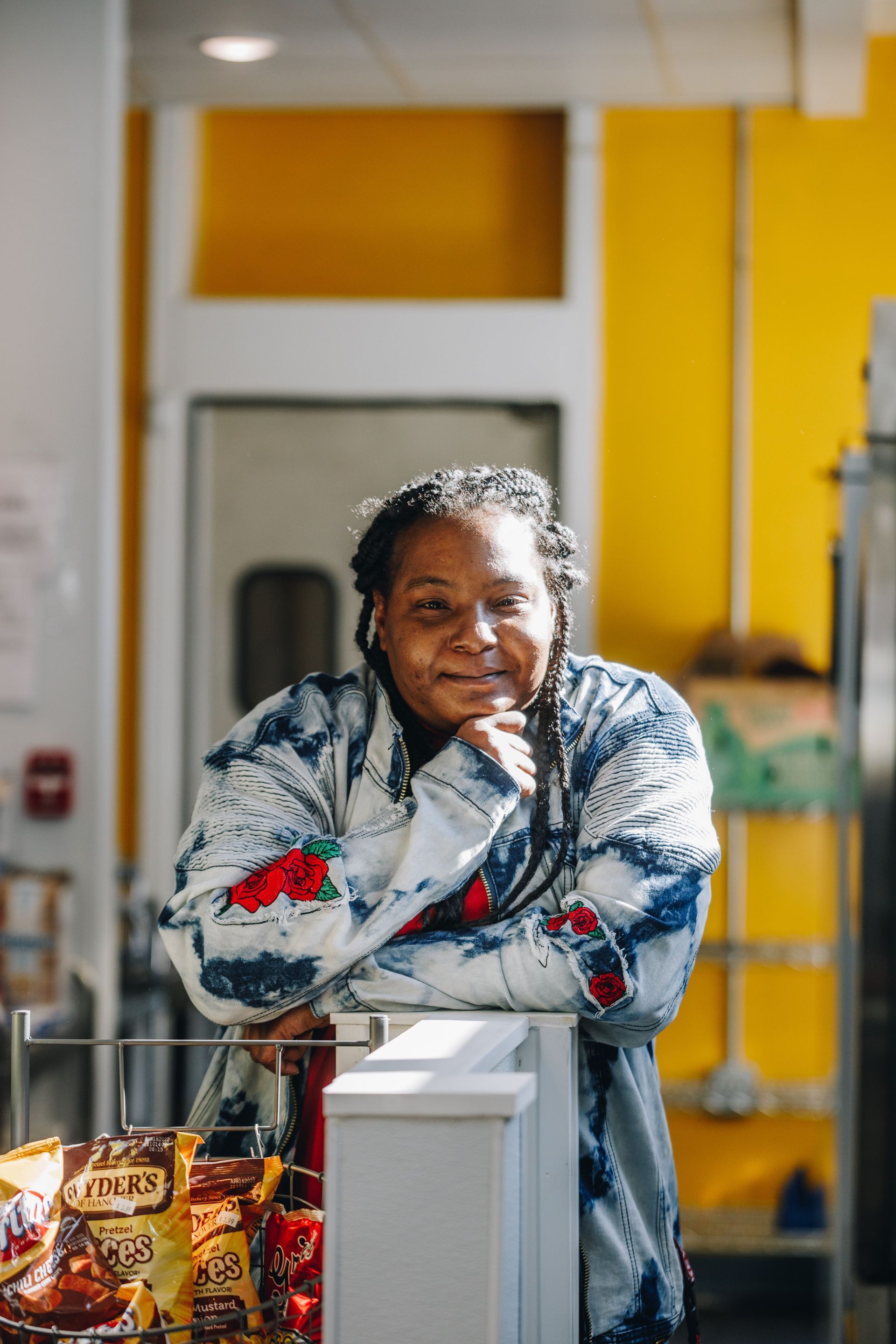GALLERY OF NEIGHBORS, CELEBRATION OF UNSUNG HEROES
CINCINNATI, OH
WE-Making is a suite of resources that explores the relationship between place-based arts practices and social cohesion as a means to advance health equity and community wellbeing. This We-Making story is one example of how place-based arts and cultural strategies uniquely contributed to social cohesion and wellbeing in this community. Throughout this story you’ll see terms paired with actions in parentheses (e.g., social capital, collective action, place attachment, civic engagement, self-determination of shared values). This is to denote for the reader how the WE-Making framework was specifically incorporated. Explore the WE-Making framework and resources.
Image credit: Community Matters
Community Matters exists to build a thriving community by removing barriers to opportunity. We work closely in partnership with the 1,500 residents of Lower Price Hill, one of 52 neighborhoods that make up Cincinnati, Ohio.
Lower Price Hill is a diverse and culturally unique home to approximately 500 families. A historically Appalachian community, the Lower Price Hill neighborhood is now significantly more diverse with 60% of residents now identifying as African American, Hispanic/Latino, or multiracial (ACS, 2019). Currently, 77% of households and 93% of children are experiencing poverty, and with a median annual income just over $10,000, nearly every resident that we partner with at Community Matters falls significantly below the Federal Poverty Guidelines (US Census, 2019). Our neighbors have experienced isolation and social marginalization for generations because of geography, long-term poverty, and overall economic disinvestment. The pandemic only heightened the scarcity of resources, personal isolation, and disparities in access to healthcare for a neighborhood already facing the lowest life expectancy rate in the city at just 62.9 years (Cincinnati Health Department, 2020).

Founded in 2014, Community Matters was created by the will of the Lower Price Hill community to address the overwhelming disparity in access to opportunities for our neighbors. Community Matters' founders listened to the frustration of community members who faced a daunting gap in the ability to create new opportunities and grow within the community.
As a result of these frustrations, alongside our neighbors, Community Matters responded with a vision challenging the idea that services alone are not the answer to our needs. Instead, we believe that our community has the ability to meet its needs and create long-term wellbeing through a collaboration between neighbors, businesses, and organizations (social capital- bridging).
To create solutions to ending poverty and build a thriving community, Community Matters goes beyond the traditional nonprofit social service model. Instead of viewing residents as clients to be provided a service, Community Matters forms partnerships with residents (civic engagement- sharing power through community ownership). Our work is focused around three core areas: 1) family sustainability by ensuring all families have the resources to achieve their goals; 2) resident leadership with residents spearheading community development and holding power in organizations (civic engagement- high opportunity, low barrier leadership); and 3) thriving community where Lower Price Hill is an affordable and vibrant place to live and work (place attachment- fostering sense of belonging).
Community Matters believes that residents living in the Lower Price Hill neighborhood are experts in the needs and strengths of our community, and these residents should be the primary voice advocating for community goals and leading community initiatives. We believe regardless of socioeconomic status, all people deserve access to culture, expression, and a sense of community, and that an increase in this access can have transformational power in both personal and community development
Over the last 6 years, Community Matters has built relationships with Lower Price Hill artists who represent a diverse range of demographics, artistic styles, and creative mediums to create a resident-led initiative called “The Collective.” Together, we have worked with these creative resident leaders to engage thousands of individuals through performances and showcases, murals and public art projects, and other creative placemaking efforts (self-determination of shared values- aligning community goals for equitable well-being.
Through this group’s efforts, we realized we needed a creative hub to increase access to creative resources and connectivity, and to facilitate the creation of community-based public art. Alongside creative resident leaders, we opened “Outerspace”, a new 4,000 square foot facility that will serve as a centralized hub for a range of creative opportunities for neighbors of all ages, skills, and backgrounds who reside in and around the Lower Price Hill neighborhood. This welcoming third space will be devoted exclusively to facilitating creative opportunities that will engage 300 youth and 700 adults annually (place attachment- rewarding experiences within community spaces, mutually reinforcing social capital).
Our team, alongside resident leaders, will intentionally develop creative programming consisting of quarterly exhibitions and community engagements hosted at Outerspace and which will be inclusive of diverse groups of Lower Price Hill residents. Additionally, we will continue to cross collaborate with area partners such as ArtsWave, Indigo Hippo, the Lower Price Hill Community Council, The Miami University Center for Community Engagement, the Community Learning Center at Oyler School, Price Hill Will, Santa Maria Community Services, Starre Council, The Welcome Project, and WordPlay Cincinnati (social capital- bridging).

For its inaugural exhibition, one of the founding members of The Collective, Kachelle Cunningham, has envisioned arranging a collection of portraits of 5 neighbors, voted by their peers, which showcases the unique, vibrant, and interconnectedness of the community and the contributions of individual neighbors (collective action- community participation in arts activities to facilitate dialogue). This exhibition,
Gallery of Neighbors,
will depict unsung heroes in large-scale photographs taken by a hyperlocal photographer and hung in the windows of Outerspace, accessible to anyone who walks, bikes, or drives past the brick-and-mortar storefront, which is located next to the recently opened Meiser’s Deli—a store developed in response to the neighborhood’s need as a food desert.
Kachelle is a socially engaged artist with a developmental disability who is one of the founding members of The Collective. Additionally she works with Starfire Council—an organization that works to build better lives for people with disabilities by discovering their talents and passions and connecting them to people in the community. Through Starfire and The Collective, Kachelle has participated in or led several community-based projects including The Black American Tree Project, Burns Street Mural, and Tanka Project through WordPlay. Her interests are in highlighting the strengths of her community, and creating connection through art.
The 5 figures represented in,
Gallery of Neighbors,
could be the grandmother that feeds any child that walks in her door or the neighbor who makes it part of their daily routine to pick up trash on the street—every neighbor’s contributions are worthy of being celebrated (mindset- inclusion of all types of community members, creating opportunities for members to collaborate and share experiences). Neighbors will be able to cast their vote around the neighborhood in several public collection areas and the large-scale photographs will be installed at Outerspace around December 9th, 2021. All 5 awardees will receive a $100 cash award and a certificate of excellence for their contributions to their neighborhood and community.
Gallery of Neighbors, and ultimately the opening of Outerspace, sets an important benchmark for future exhibitions and engagements because it enforces the goals of the project of inclusion, access, community-driven work, and empowerment. Community Matters and The Collective exemplify the WE-Making framework by sharing power through community ownership of Outerspace with all types of community members who collectively work to identify and set community goals. Because members of The Collective live or work in the neighborhood, there is a consistent presence and connectedness which is unparalleled, allowing them to build authentic relationships—driving participation and a sense of belonging. Because of this trust and social cohesion built, The Collective and resident leaders can be effective in the programs developed, driving collective action in addressing issues that face the community such as social isolation, mental and physical health, and social justice.



